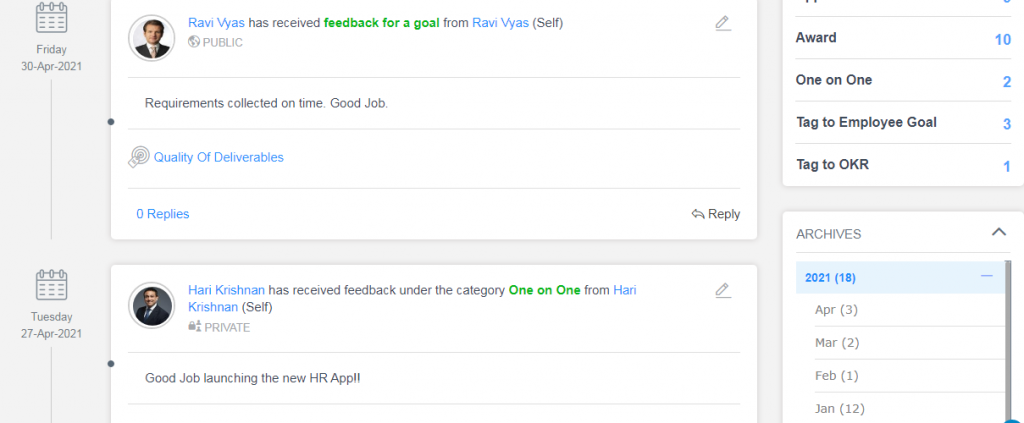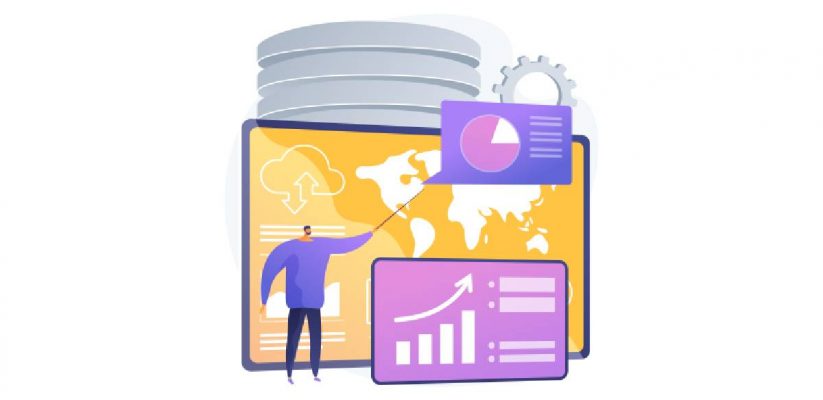The Important Employee Performance Metrics You Need To Be Tracking And What They Mean To Your Organization?
Just like how a parent marks his/her child’s growth in height on the wall, an organization should mark the performance of the employees. Continue doing what you have been doing if the results are like you expected. If not, figure out the reason and fix it.
Employee performance metrics should provide accurate insights and reports for the employee evaluation process. This will also help employees know themselves and motivate them to take appropriate action to become ace performers.
Besides, these metrics can be used by the managers and HR during the employee performance review process to provide the right feedback and recommend a suitable training program to the employees.
Some of the employee performance metrics that need to be tracked include,
- Tracking performance against goals to look at work efficiency 2.
- Continuous Check-ins
- 360 Degree Feedback and Net Promoter Score for work quality and measure behavior
- Rewards and Recognition
- Higher productivity and adherence to timelines
Objectives and Key Results for Employee Evaluation
Objectives and Key results can help in employee evaluation as the framework is designed in such a way that the progress is tracked along the way, even before the final target is achieved.
Objectives are goals that a team desires to achieve in a particular quarter and key results can measure the team’s progress. Every individual should be assigned a key result, for which they should create their own individual OKRs and submit them to the managers for review.
The positives of OKR are that it assures accountability and completion within the stipulated time if taken seriously. At least, 70% of the work should be done in the case of OKRs. Because completing 100% of the tasks implies that you have not set challenging OKRs.
This goal-setting process, which seems like naturally having an employee performance tracking system within it, can help you track the performance, productivity, exhibition of soft skills, and competencies of your employees.

Why is Continuous Check-in an Important Employee Performance Metric?
Employee performance review is not going to be an annual process anymore. Though not completely abandoned, many companies are moving away from the once-a-year employee evaluation process and conducting frequent one-on-one meetings, continuous check-ins, and regular team meetings to track the performance of every individual in the workforce.
Through continuous check-ins, the employees can be assessed periodically, and the managers can learn more about the employees and their concerns. Even the hindrances that obstruct an employee’s productivity can be eliminated by the managers as they start empathizing with their team members, which is the result of frequent conversations.
This strong bond between the manager and the employee has a great positive impact on the employee’s performance. On the other hand, it can be used for employee evaluation and performance tracking. During these sessions, the managers give both positive and constructive feedback to the employees after analyzing their way of work for a month or so.
These conversations can be recorded and used for improvement purposes and also the employee performance appraisal process. The recorded conversations show how the employee has improved over a period of time or if his/her productivity and quality have gone down. This kind of insight would be very helpful for the management to plan powerful strategies for enhancing the employee experience.
Work Quality and Behavior Can be Measured
360 Degree Feedback. 360 degree feedback is a feedback mechanism that collects comments from peers, managers, customers, and other stakeholders on an employee’s performance. This framework helps in identifying the future leaders of the organization through analyzing and getting the average of the feedback given to an employee.
360 degree feedback process maintains confidentiality through anonymity so that the peers are allowed to comment their honest opinions about an employee’s work quality and behavior. Of course, sometimes it could be misleading. That’s why the average is taken into consideration, not one individual’s feedback.
These opinions help the management to understand the behavior of an employee in the workplace, his/her culture fit, performance, and quality.
Net Promoter Score. Do you agree that all works are not quantifiable? How do you measure the performance of a customer success specialist? What kind of employee tracking software or employee performance metrics should be used and followed to get the precise data?
For a JD that is not quantifiable, the net promoter score can help. A retail support specialist or customer success, the performance in these positions can be tracked by measuring the customer satisfaction rate and customer happiness.
A customer survey can give us a lot of insights such as improvements to be made, features to be highlighted, high potential employees, and consistent salespeople.
Rewards and Recognition – An Employee Performance Tracking Process
An organization’s rewards and recognition plans are crucial to improving the employee engagement rate and decrease the employee turnover rate. When an employee’s performance exceeds the expectations of the employer, he/she is recognized and rewarded. The appreciations can be done through robust employee performance tracking software like Synergita.
The peers and managers can post their good words about an employee on a digital social wall within an organization. It would be an honor and also serve as a reminder for both managers and employees before entering the performance review discussion.

Productivity Range and the Skill to Stick to Timelines to Measure Work Efficiency
The employees’ productivity and their ability to meet the deadlines are two key employee performance metrics. Sometimes, productivity and meeting deadlines can be affected due to various reasons. It could be professional or personal, and here, the continuous check-ins help the employee to overcome the challenges.
The processes are interlinked, and the data from one process is related to the positive effect created by another process. The reports can provide the information the managers are looking for during the employee performance evaluation process: timelines as to when the employee’s productivity was down or at peak or on an average like the 80% of the workforce, as said in Pareto’s principle.
Why These Numbers are Important to the Organization?
Today, you cannot run a business without knowing what your employees are up to, how their performance is, and what their concerns are. To know these data, processes like continuous check-ins, 360 degree feedback, OKR, Net Promoter Score are must-haves. Employee engagement surveys provide additional information on the factors that boost and hinder the employees’ motivation and engagement.
With data, the fuel to today’s economy, you can form fail-proof strategies by predicting the future workforce behavior based on the curve trends, employee perception, and exhibited skills.
Thus, go for a cloud-based tool like Synergita that can assist you like your best friend in your journey to creating a high-performing workforce.
